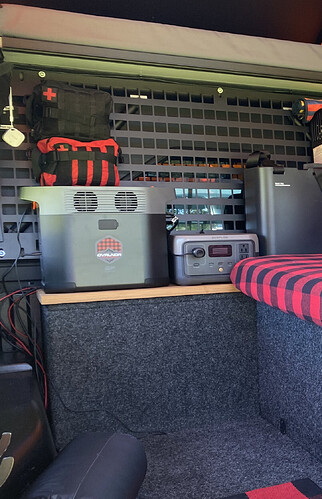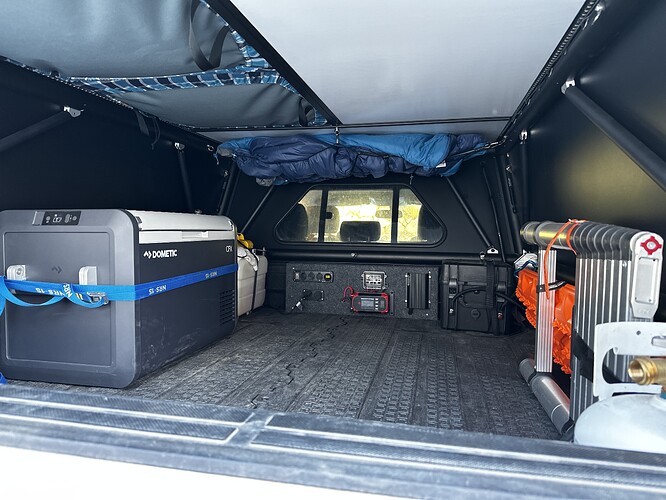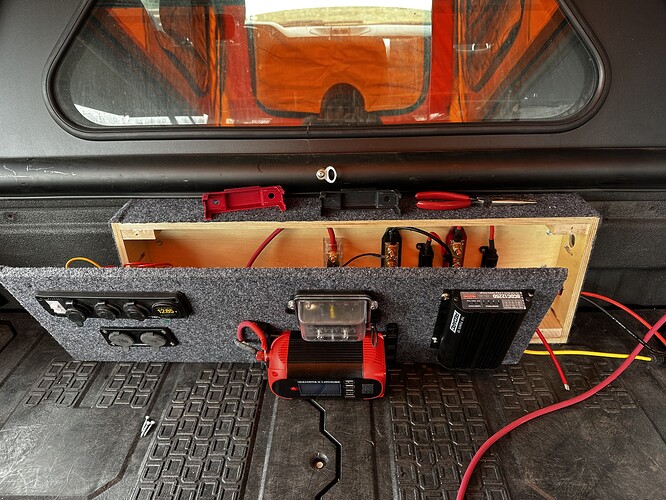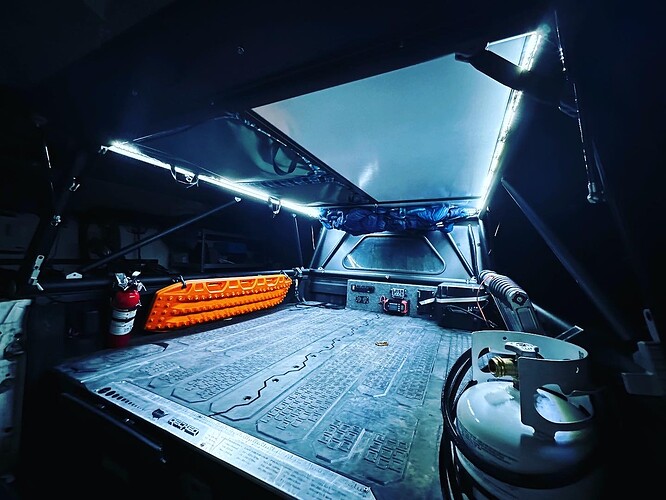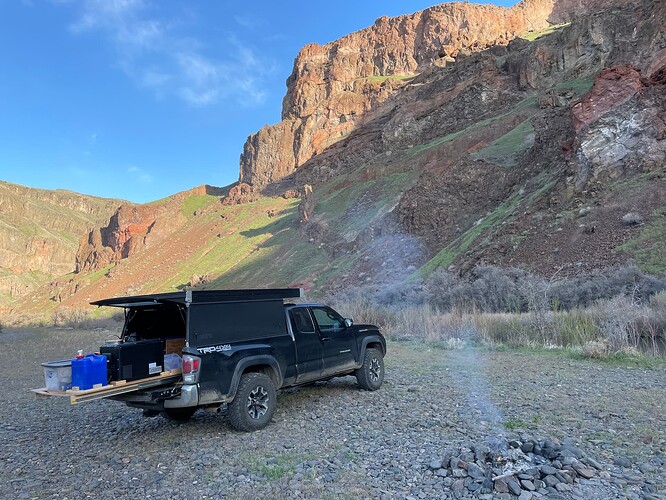I’ll echo some thoughts. If you need higher power draw, more robust operating range for your battery, things like cold-crank amps as a backup starter battery- then you go for the big build.
If you just need to charge laptops, phones, run some small electronics- just get an all-in-one.
I sold my goal zero yeti lithium and swapped for a beefier setup.
I have the Dakota lithium 135+ battery and a DC-DC charger which manages 100w solar input OR alternator charge when the truck is running.
This setup powers my diesel heater, dometic CFX55IM, charges my gizmos… and has enough to spare.
We built a custom box with tons of connections, an inverter, and all safety checks (fuse boxes and such). It took a day in the garage to fully assemble and create the box, but this is way more powerful than my goal zero.
Hey, whatever works! It’s always cheaper and easier to “rung what ya brung” and see if what’s in your kit is sufficient with no upgrades, or borrow someone’s smaller “all in one box” for the weekend to see what you actually need.
My first step was to add up all of my electronics by their aH draw ranges, multiply by 72, and see what I may use for a standard 3-day non-stop power draw.
Work backwards from there.
My dometic pulls about 1a/H, maybe 2 in the summer on a hot & sunny day. My heater pulls about 1a/H.
So, with zero sunshine and my truck never starting, if somehow the sun was out and my truck couldn’t get any solar (nearly impossible, I know), I would need 72aH for my fridge, maybe 120, and my heater for 8 hrs each night would be 24total aH.
96-148aH worse case. I opted for 135aH battery, so if my panel fails and my truck doesn’t start for 3 days in the desert I can keep food cold all day and my camper warm at night.
I hope that makes sense. I could have easily opted for 65aH or 100aH and likely never run out of juice, but hey… you do you, right?
